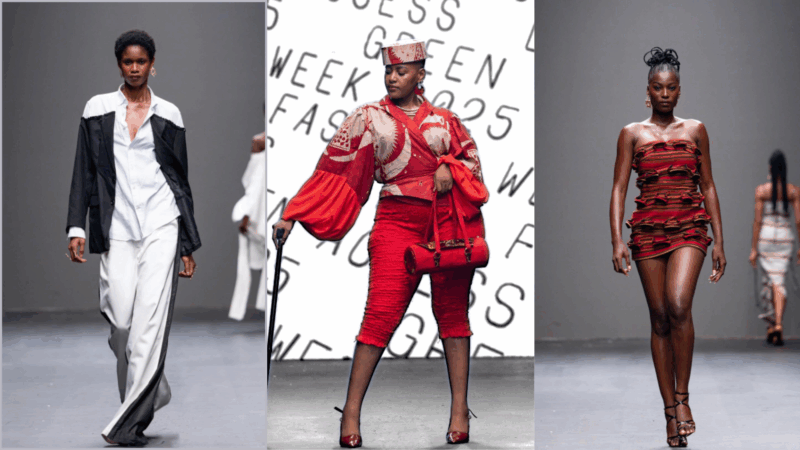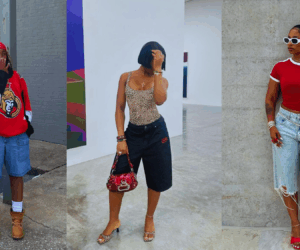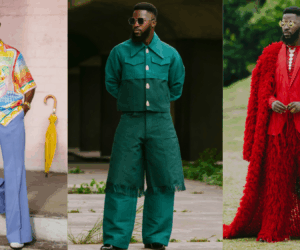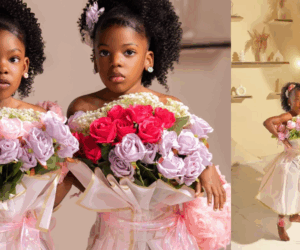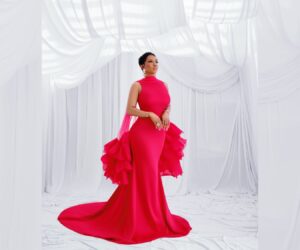
Every time Lagos Fashion Week comes around, I look forward to seeing all the beautiful designs from Nigerian fashion brands and designers that walk the runway and, most importantly, the common themes and fashion trends that we’ll see.
More often than not, you’ll spot recurring design elements across different brands, and these, in turn, determine what fashion trends you’ll see in vogue in the months after the fashion week.
This year, Lagos Fashion Week (LagosFW25) was held from October 29th to November 2nd, and as usual, so many Nigerian brands walked the runway and brought their A-game, including Hertunba, Elexiay, JZO, Jewel Jemila, Fruché, Boyedoe, Onalaja, and many more.
While each brand had its own story to tell, a few design threads (quite literally) ran through the collections.
If you were watching closely, as I was, a few unmistakable trends emerged as the defining looks of the season. Designers were clearly in a mood for texture, craftsmanship, and a bold, fluid silhouette.
Here are the biggest takeaways from the LagosFW25 runways that you need to know about:
1. Crochet
Crochet isn’t new to Nigerian fashion, but it’s having a major renaissance. This year’s runway saw an explosion of beautifully woven pieces, from dresses and skirts to tops and matching sets.
Designers experimented with intricate weaves, combining bright colours with airy, skin-baring textures that felt both nostalgic and modern.
Crochet has always embodied the idea of craftsmanship and patience, as it takes hours to knit one piece. Expect to see crochet everywhere next year, especially in beachwear and summer looks.
The standout example was the incredible full-length coat in Studio Imo’s SS26 collection, “Moirai,” which showcased a magnificent patchwork of earthy tones and primary colour squares.
READ ALSO: We’re Taking Notes from Sunshine Rosman’s Princess Style
2. Tie-Dye
The runway was awash in vivid colours, and the medium of choice for many designers was the expressive art of tie-dye (or adire and kampala in local terms). This isn’t the tie-dye of festivals past; this iteration is refined and incredibly chic.
Nigerian brand Garbe showcased a collection rich in tie-dye prints. The patterns were less psychedelic and more focused on creating a structural feel with bold reds, oranges, and yellows. It’s also a way to infuse your wardrobe with a maximalist attitude without feeling overdressed.
3. Fringe Detailing
If a garment didn’t have movement this season, it simply wasn’t trying hard enough. Fringe detailing was everywhere, injecting a playful, dramatic energy into tops, skirts, and even trousers. This trend is all about celebrating the joy of walking and the way clothing interacts with the body.
Hertunba presented a regal collection, featuring a stunning strapless mini-dress that culminated in a skirt of deep blue, white-fringed layers.
Similarly, Pepperrow presented a masterpiece collection with looks often featuring intricate beadwork and shimmering, dramatic fringe on mini-skirts and tops.
The fringe added a lightness and made the dresses look like what you’ll reach out for when attending an opulent party.
READ ALSO: Balenciaga’s “Destroyed” Jacket is Taking the Internet by Storm
4. Denim
Denim had a major fashion moment this season, but not in the casual sense. Designers pushed denim far beyond the realm of jeans and jackets, showcasing it with innovative cuts and exaggerated proportions.
Boyedoe’s SS26 collection, Paradise Regained, explores colour, structure, and texture with bold precision, featuring looks that utilise denim in unexpected ways. We saw denim used to create sharp, almost sculptural silhouettes, which is totally different from your usual casual wear denim.
FIA also presented a collection of beautifully structured pieces, including a full blue denim-look co-ord set with a cropped jacket and wide-leg trousers. This trend is about taking a familiar textile and giving it a couture-level complexity.
5. Silk
Far from being relegated to simple evening slip gowns, silk was shown as a fabric for expressing style and grace. For brands like Fruché and Ibilola Ogundipe, silk was used to create liquid-like shapes that moved with the models, which made the clothes feel expensive and effortless.
Fruché used rich, deep-coloured silk, while Ibilola Ogundipe favoured delicate, soft cuts in light pinks and peaches. Meanwhile, designers like Eki Silk used the fabric’s smooth surface for artistic prints, featuring rich, bright colours swirled into detailed patterns.
6. Aso-Oke
The celebration of Nigerian textiles was powerfully present, notably through the use of Aso-Oke. Traditionally a ceremonial cloth, designers have masterfully adapted this heavy, hand-woven fabric for everyday wear, demonstrating its versatility and its ability to be worn outside special occasions.
We saw Aso-Oke utilised in modern clothing, such as the beautiful striped and tiered mini-dress by Éso by Liman or the two-piece set by FIA.
Lagos Fashion Week 2025 has firmly established that Nigerian designers are leading a charge towards maximalism.
It has clearly set a tone for wearing rich textures and confident shapes. The key trends celebrate handmade skills (Aso-Oke, crochet, tie-dye) and dramatic silhouettes (silk, fringe, sculpted tailoring), all while pushing classic pieces like denim into new territory.
These are the trends that will soon be walking off the runway and into the streets. Make sure you’re ready!

